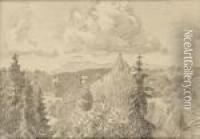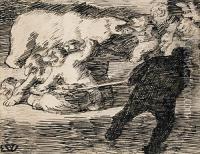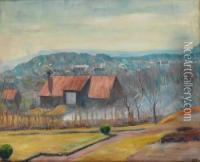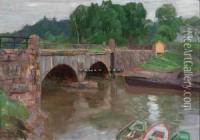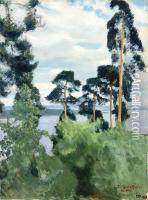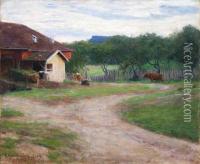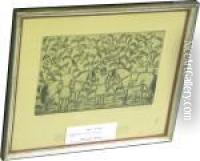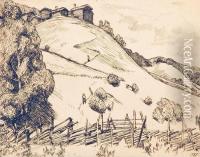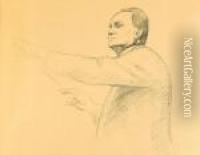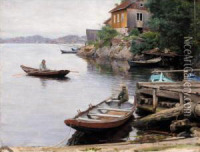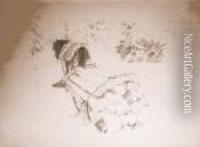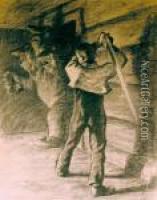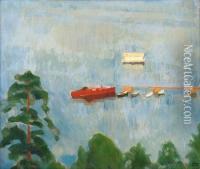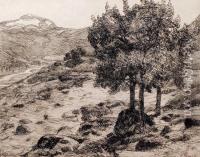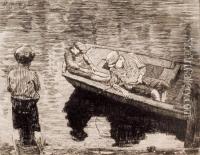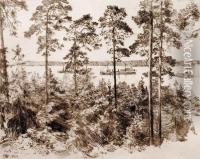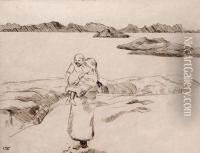Erik Werenskiold Paintings
Erik Theodor Werenskiold was a Norwegian painter and illustrator, born on February 11, 1855, in Eidskog, Norway. He is best known for his realistic portrayals of Norwegian peasants and the Norwegian landscape, as well as his contributions to illustrating Norwegian folklore and fairy tales.
Werenskiold moved to Oslo (then called Christiania) to attend the Drawing School, which was the precursor to the Norwegian National Academy of Craft and Art Industry. He later studied in Munich, which was a popular destination for aspiring Scandinavian artists during the 19th century. While in Munich, Werenskiold was influenced by the realist movement, which is evident in the naturalistic style of his later works.
Upon returning to Norway, Werenskiold became closely associated with the Norwegian romantic nationalism movement, which sought to develop a distinct Norwegian cultural identity. He became particularly well-known for his illustrations for the Norwegian folktales collected by Peter Christen Asbjørnsen and Jørgen Moe. His artwork for these tales helped to visually define Norwegian folklore for both a national and international audience.
In addition to illustration, Werenskiold also created many landscape paintings and portraits. His landscapes often featured the Norwegian countryside, capturing the unique light and atmosphere of the region. His portraits included many prominent figures of his time, contributing significantly to the documentation of Norwegian cultural history.
Werenskiold was also politically active and had strong opinions about the social issues of his time, which sometimes emerged in his work. He was a supporter of the rights of tenant farmers and was concerned with social justice, themes that can be found in some of his more poignant paintings of peasant life.
Throughout his career, Werenskiold received considerable recognition in Norway and abroad. He was awarded a state salary in 1890, which was a significant honor and provided financial stability. He continued to work and exhibit his art until his death on November 23, 1938, in Oslo. Erik Werenskiold left a lasting legacy in Norwegian art, particularly through his contributions to the visual interpretation of Norwegian cultural heritage.

